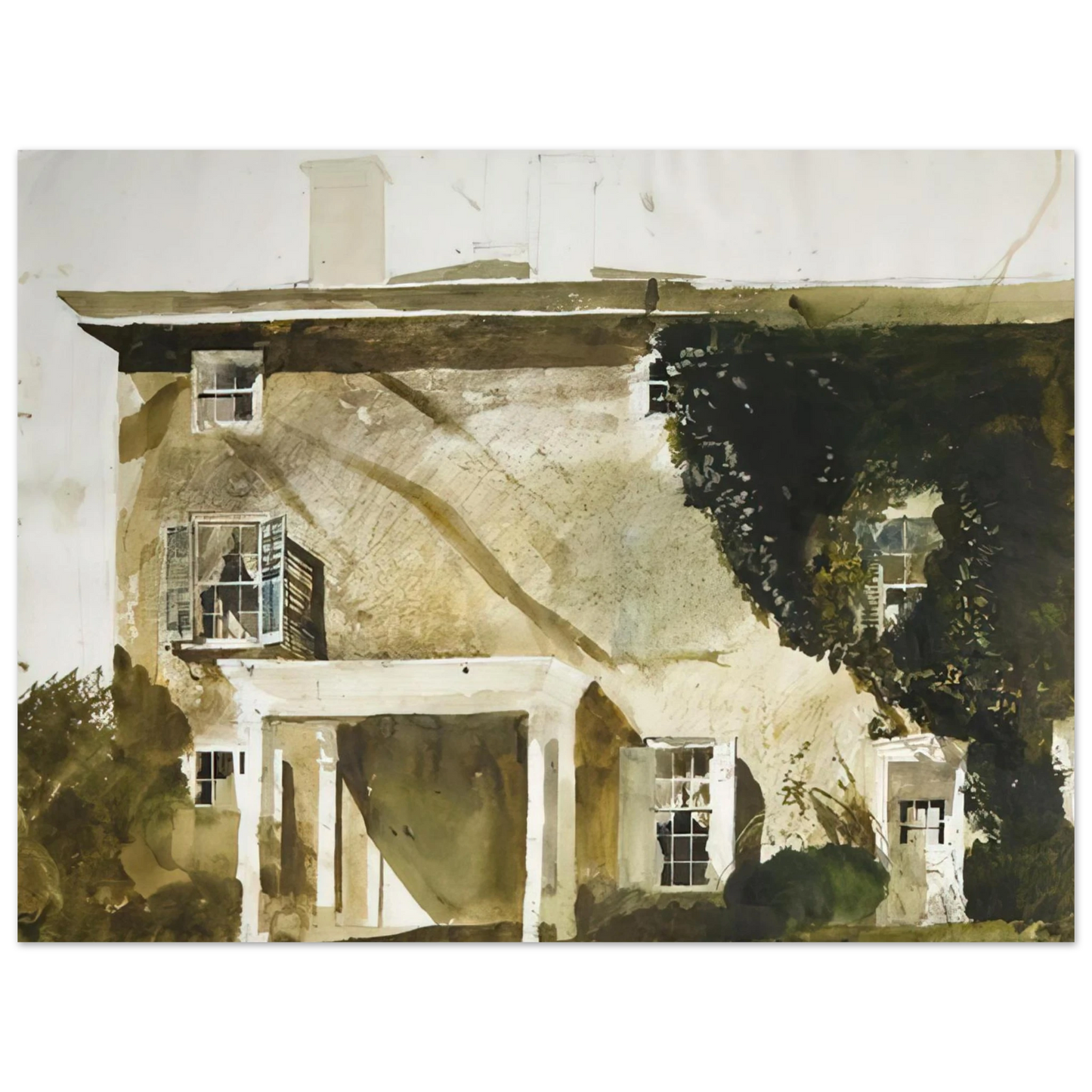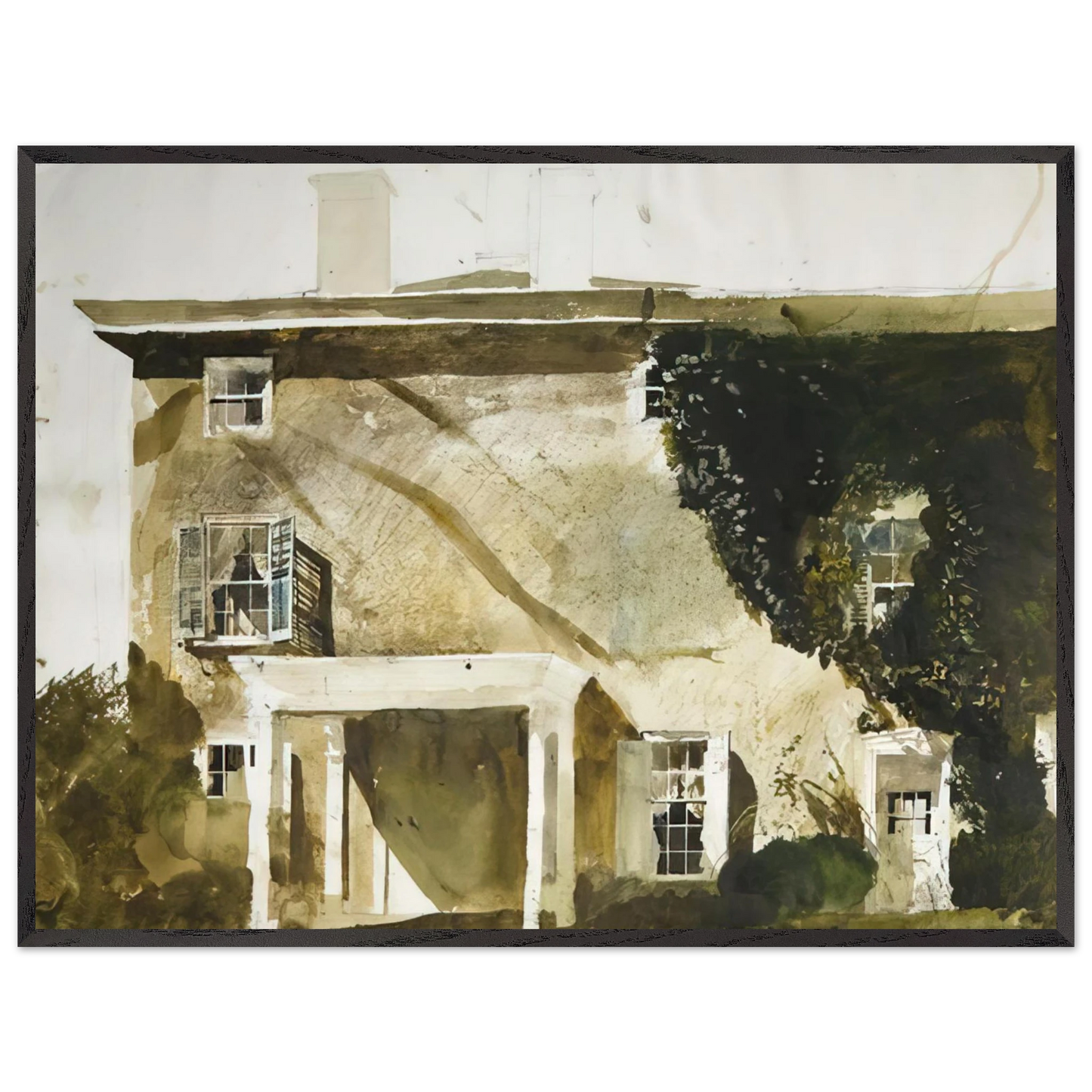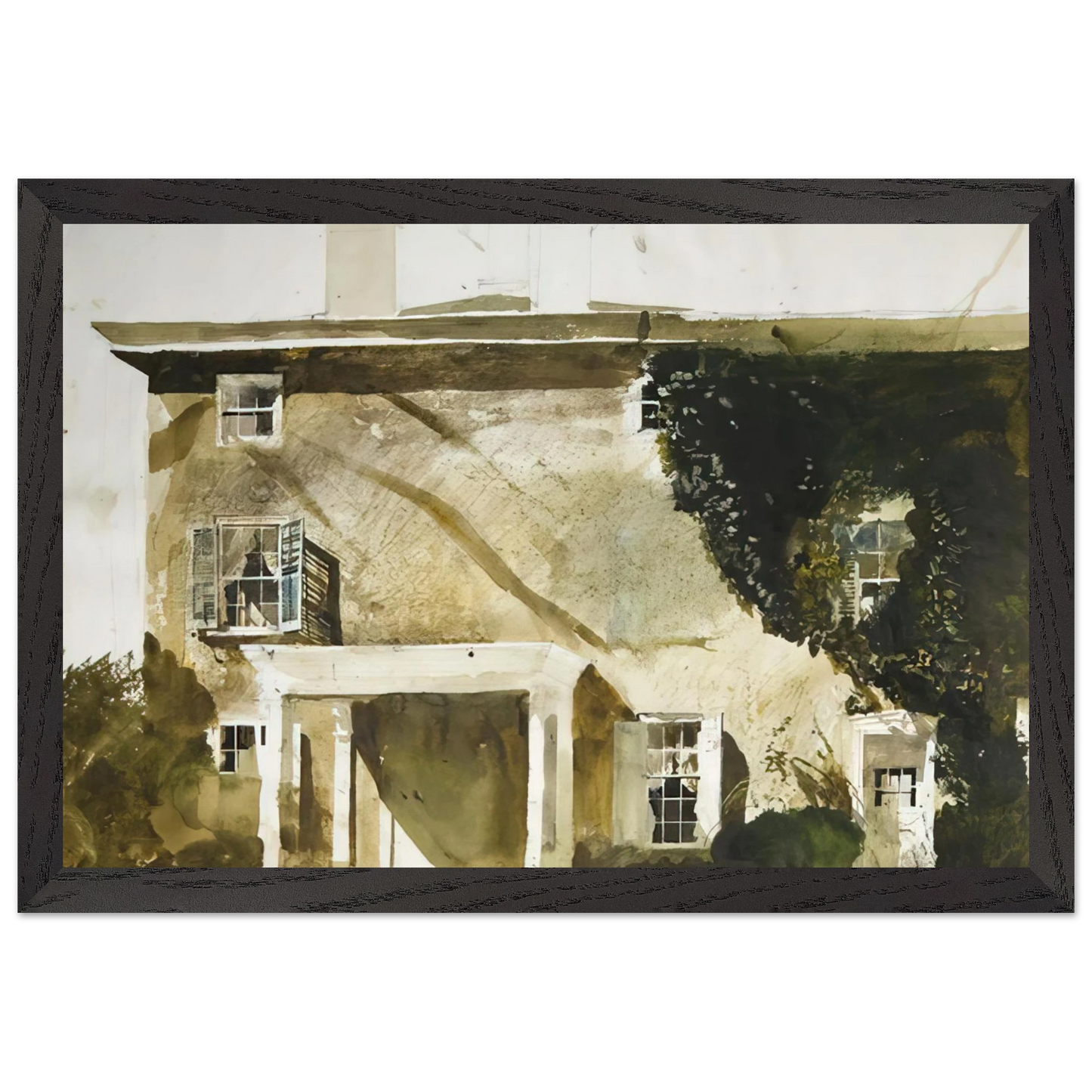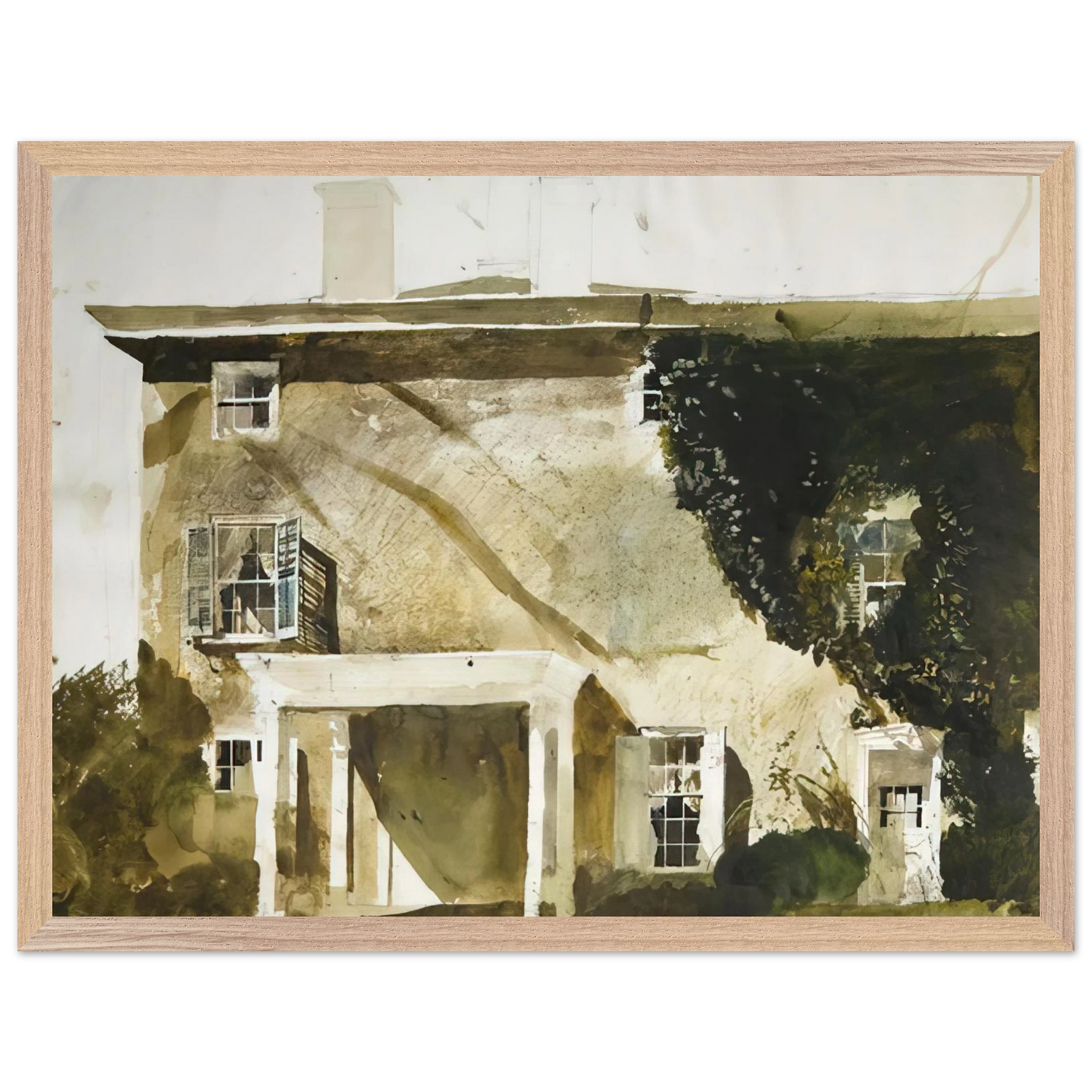RedKalion
Andrew Wyeth - THE HATTON HOUSE 1967 Wall Art
Andrew Wyeth - THE HATTON HOUSE 1967 Wall Art
Couldn't load pickup availability
Discover more in our: Andrew Wyeth Poster Collection
Discover our Fine Art Posters - Iconic artworks with vivid colors using using our fine art 12-color printing technology. Perfect for art lovers and designers alike.
- Color Vibrancy: Our 12-color fine art printing technology delivers vivid, accurate colors with stunning depth, far beyond standard 4-color inkjet printing technology.
- Paper Finishing: Smooth matte finish for a clean, glare-free display.
- Paper Weight: 200 gsm (80 lb), thickness: 0.26 mm (10.3 mils).
- Available Sizes: Offered in a variety of sizes to fit any space or frame.
- Eco-Friendly Materials: Printed on environmentally conscious, FSC-certified paper.
No minimum orders, printed and shipped on demand to guarantee freshness and customization for every order.
Transform Your Space with Timeless Art: Discovering Posters and Andrew Wyeths The Hatton House 1967 Posters have long been celebrated as an accessible and versatile form of wall art, offering an instant way to infuse personality, style, and cultural depth into any living or working environment. Far beyond simple decorations, high quality art prints and decorative posters serve as windows to different worlds, artistic movements, and profound narratives, making them an indispensable element of modern home decor and interior design. Whether you are seeking to revitalize a living room, add a touch of sophistication to an office, or create a serene atmosphere in a bedroom, the right art poster can profoundly elevate your space. They offer an affordable entry point into collecting iconic imagery, bringing museum quality art directly into your home without the prohibitive cost of original works. From vibrant abstract pieces to classic landscape art, the world of art posters is vast, promising something for every taste and aesthetic. The enduring appeal of posters lies in their remarkable ability to democratize art. They allow enthusiasts and new collectors alike to engage with famous paintings, stunning photography, and graphic design masterpieces that might otherwise remain confined to gallery walls or art history books. Modern printing techniques have significantly enhanced the quality of art prints, ensuring that colors are vivid, details are crisp, and the overall impression is a faithful representation of the original artwork. This makes fine art prints, especially those reproducing classic works, a smart investment in aesthetic pleasure and cultural enrichment for any home or office. As wall hangings, they are easy to install, reposition, and even swap out, offering unparalleled flexibility in curating your personal art collection and updating your decor theme with ease. Among the pantheon of celebrated American artists, Andrew Wyeth stands as a colossus, renowned for his intensely personal and often melancholic depictions of rural American life. His work, characterized by its meticulous detail, muted color palettes, and profound emotional resonance, offers viewers a unique window into the soul of a particular landscape and its inhabitants. One such masterpiece, now available as a stunning art print, is "Andrew Wyeth - THE HATTON HOUSE 1967." This iconic painting perfectly encapsulates Wyeths distinctive style and thematic concerns, making it an extraordinary choice for a discerning collector of art posters seeking depth, beauty, and a touch of American realism for their walls. "The Hatton House 1967" immediately commands attention with its stark and evocative portrayal of an old, seemingly abandoned house. Wyeths masterful hand transforms what might otherwise be a simple architectural study into a poignant narrative about time, decay, and enduring presence. The house itself is the undisputed central subject, rendered with a realism so profound that viewers can almost feel the texture of its weathered surfaces. It is not just a building; it is a character, laden with history, whispers of past lives, and the silent dignity of something slowly succumbing to the elements. Wyeths architectural painting focuses on a structure that feels both familiar and deeply isolated. We observe the subtle signs of neglect: perhaps peeling paint, boarded windows, or a general air of disrepair that speaks volumes about its current state. Despite its apparent abandonment, the house possesses a quiet strength, standing resolutely against the backdrop of its environment. This focus on detail, bringing every crack and shadow to life, is a hallmark of Wyeths approach to art, lending his compositions an almost photographic precision while retaining a deeply emotional core. The setting surrounding The Hatton House is as critical to its mood as the house itself. Wyeth typically depicted landscapes that were sparse, perhaps in late autumn or early winter, or simply reflecting a perpetually dormant season. The vegetation is often overgrown or barren, further emphasizing the sense of isolation and the inexorable march of nature reclaiming its own. The sky, a vital element in many of Wyeths works, often appears overcast or subtly illuminated, contributing to the paintings overall somber, reflective atmosphere rather than casting harsh, dramatic light. There is a palpable absence of human activity, which reinforces the themes of solitude and forgotten histories. The color palette of "The Hatton House 1967" is quintessentially Wyeth: dominated by muted, earthy tones. Grays, browns, desaturated greens, and off-whites define the scene, creating a sense of understated beauty and profound melancholy. There is a deliberate eschewal of vibrant hues, which deepens the paintings introspective mood. The quality of light in the painting is often indirect, diffuse, and gentle, allowing for subtle gradations of shadow that define texture and form on the weathered surfaces of the house. This natural light highlights the inherent beauty in decay, making the mundane extraordinary. Wyeths composition in "The Hatton House" is masterfully balanced, drawing the viewers eye into the scene with an almost magnetic pull. He often employed slightly unusual perspectives or framing, lending his subjects a heightened sense of reality and emotional weight. The viewer is positioned as a silent observer, gazing upon a scene steeped in quiet contemplation. The arrangement of elements guides the eye across the decaying details, prompting a slow, deliberate appreciation of every brushstroke. This sense of depth, coupled with Wyeths characteristic precision, results in a piece that is both expansive and intimately detailed. At its heart, "The Hatton House 1967" evokes powerful themes of melancholy, nostalgia, and solitude. It speaks to the passage of time, the beauty found in decay, and the quiet dignity of neglected places. The painting serves as a visual metaphor for forgotten stories, past lives, and the resilience of structures against the relentless forces of nature. It invites introspection, encouraging viewers to ponder the ephemeral nature of human endeavor and the enduring power of the land. The mood is one of quiet contemplation, a poignant reflection on absence and what remains unsaid. Andrew Wyeths artistic signature is unmistakable in "The Hatton House." His commitment to realism, often categorized as regionalism, showcases his deep connection to the specific landscapes and the underlying narratives of rural America. While not directly evident in a print, his preference for tempera painting contributed to the incredible detail and texture that defined his style, qualities beautifully translated into high quality art prints. He possessed an uncanny ability to infuse everyday scenes with profound emotional depth, making his works timeless explorations of the human condition and our relationship with the environment. Choosing "The Hatton House 1967" as an art poster for your wall offers a unique opportunity to bring a piece of this profound legacy into your personal space. Its timeless appeal and status as a classic of American art ensure it will never go out of style. As a decorative poster, it adds a sophisticated, contemplative, and deeply atmospheric element to any room, sparking conversation and inspiring introspection. This is not merely a picture; it is a story captured in time, a meditation on existence that resonates deeply with many. Consider the transformative impact of placing this particular piece in various settings. In a living room, it can serve as a striking focal point, a statement of refined artistic taste that invites quiet contemplation. In a study or home office, "The Hatton House" can inspire focus and thoughtful reflection, providing a serene backdrop for intellectual pursuits. Even in a bedroom, its subtle hues and profound narrative can contribute to a calm, sophisticated, and reflective atmosphere. High quality posters faithfully capture the nuances of Wyeths original work, ensuring that the emotional depth is preserved. The advancements in modern art printing technology mean that you can acquire museum quality prints that rival the fidelity of viewing the original. Giclee printing processes and archival inks ensure exceptional color accuracy, rich detail, and resistance to fading, making your art poster a lasting investment. Whether you prefer a framed poster for a polished look or an unframed poster for a minimalist aesthetic, various sizes are available to perfectly suit your specific space and design vision. Art posters, especially reproductions of renowned masterpieces like Andrew Wyeths "The Hatton House 1967," make for thoughtful and unique gifts for art lovers, history enthusiasts, or anyone who appreciates distinctive home decor. They offer the unparalleled value of bringing celebrated art into everyday life, making it an accessible way to start or expand an art collection. Embrace the opportunity to own a piece of Andrew Wyeths enduring legacy. Explore the profound beauty of "Andrew Wyeth - THE HATTON HOUSE 1967" as a stunning art print and discover the transformative power that high quality wall art can bring to your interior design and personal aesthetic.
Share












